Agriculture
New documentary ‘Nitrogen 2000’ exposes the Dutch government’s war on farmers
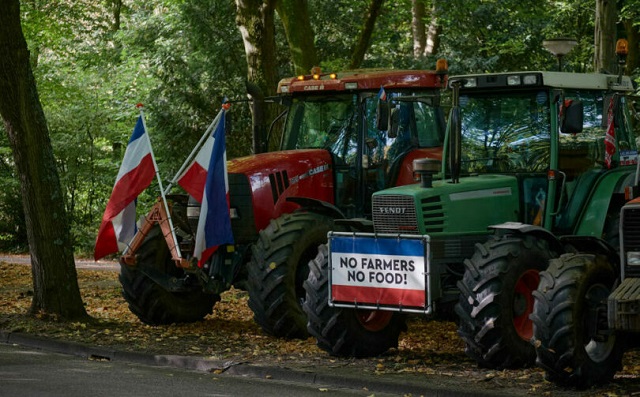
Tractors belonging to Dutch farmers are parked with protest boards and Dutch flags upside down on a road on the outskirts of The Hague on September 20, 2022, in The Hague, Netherlands
From LifeSiteNews
Ultimately, the documentary highlights a power struggle where fear and environmental narratives are used to justify land control, leaving farmers marginalized and resources controlled by a select few.
STORY AT-A-GLANCE
- Dutch cattle farmers own 70 percent of Holland, but the government is pushing for a forced buy out of 50 percent of their land, claiming it’s necessary to reduce pollution.
- Experts say the move to get rid of farmers isn’t about the environment but, rather, taking control of valuable land.
- The government’s computer models, which are used to support its plan to reduce nitrogen by buying up farmland, are based on a flawed assumption that nitrogen migrates from one field to the next.
- The push to remove farmers from their land is being driven by NGOs, which are primarily funded by the government, making them government extensions.
- A $25 billion government fund, created using taxpayers’ money, has been established to buy farmers’ land; once a farmer sells their land, they’ll be legally prohibited from establishing a farm anywhere else in Europe.
(Mercola) — Nitrogen 2000 is an important 45-minute documentary on the Dutch farmer struggle of 2019-23. Dutch cattle farmers own 70 percent of Holland, but in 2019, the government began pushing for a forced buyout of 50 percent of their land, claiming it’s necessary to reduce pollution. But for the approximately 60,000 farmers in the Netherlands, agriculture is a way of life, often passed down through the generations – one that’s necessary to supply food for the population.
According to a press release for the film, “Dutch farmers produce the most food per hectare of farmers anywhere, and the Netherlands is the world’s second largest exporter of agricultural products.”
Farms are interwoven into the fabric of their communities, such that “everyone, even if you live in the city like in Amsterdam or in Rotterdam, in a five-minute drive you will see cows, you will see farmland… it’s so ingrained in our society, in our way of life, that farmers are part of our culture. Everyone has someone in their family who was once a farmer,” says political commentator Sietske Bergsma.
But as professor Han Lindeboom, a marine ecologist at Wageningen University & Research, explains in the film, “The government has taken the stance that we have a huge problem with nature and that due to EU regulations we should save nature. And nowadays we want to solve that problem by simply eliminating a large amount of farms.”
The Dutch government claims it needs to nationalize half of cattle farmers’ land – an amount equal to about one-third of Holland – in order to reduce nitrogen, but experts say this plan is seriously flawed.
Is nitrogen really the problem?
Carbon and nitrogen have been declared environmental enemies by officials worldwide, prompting an array of restrictions. The U.N. has stated that nitrogen must be managed in order to save the planet, and nitrogen is described as “one of the most important pollution issues facing humanity.” Nitrogen not only is found in fertilizers, but it also makes up about 70 percent of air and is essential for plant growth.
“The nitrogen is only a problem for a few plants,” Lindeboom explains. “There are certain plants that don’t like it and they disappear. Other plants like it and they appear. So, basically what you’re doing is changing nature.”
“They have declared that nitrogen is the major problem,” Lindeboom, an adviser to NIOZ, the Royal Netherlands Institute for Sea Research, continues in the press release. “Well, I am an expert in nitrogen and I dare to say it is not.” According to Lindeboom, the government’s computer models, which are used to support its plan to buy up farmland, are based on a flawed assumption that nitrogen migrates from one field to the next.
The EU is also the site of the largest network of protected areas globally, an area known as Natura 2000, which covers 18 percent of EU land. In Holland alone, there are 162 Natura 2000 areas. In 118 of them, it’s said there are organisms living that don’t like too much nitrogen.
“In 2021, the European Union’s Natura 2000 network released a map of areas in the Netherlands that are now protected against nitrogen emissions. Any Dutch farmer who operates their farm within 5 kilometers of a Natura 2000 protected area would now need to severely curtail their nitrogen output, which in turn would limit their production,” Roman Balmakov, Epoch Times reporter and host of “Facts Matter,” says.
Government forcing out farmers
Many Dutch farmers are now facing the loss of their farms over the controversial nitrogen rules. Farmer Jos Block says:
We have a lot of problems with the nitrogen rules because our farm is near to and in Natura 2000. And that is really a problem for us. This is my land. I’m the owner. But this is also a nature land, the Natura 2000. In this area, the government says we need to reduce 95% of the nitrogen that’s coming out of the stables.
But experts, including Lindeboom, say this is “absolutely not necessary to save nature” and the government is “picking on farmers much too much.” Dutch dairy farmer Nynke Koopmans with the Forum for Democracy is among those who believe the nitrogen problem is made up.
“It’s one big lie,” she says. “The nitrogen has nothing to do with environment. It’s just getting rid of farmers.” Another farmer said if new nitrogen rules go into effect, he’d have to reduce his herd of 58 milking cows down to six. Nitrogen scientist Jaap C. Hanekamp, Ph.D., was working for a government committee to study nitrogen, tasked with analyzing the government’s nitrogen model. He told Balmakov:
The whole policy is based on the deposition model about how to deal with nitrogen emissions on nature areas. And I looked at the validation studies and show that the model is actually crap. It doesn’t work. And doesn’t matter. They still continue using it. Which is, in a sense, unsettling. I mean, really, can we do such a thing in terms of policy? Use a model which doesn’t work? It’s never about innovation, it’s always about getting rid of farmers.
The Dutch government has been gradually tightening its grasp on farmers for some time. Every year, farmers must report details about the number of cows they farm and how many they plan to have in the future. The government also dictates what types of crops farmers grow and requires complicated and expensive manure testing for phosphates and ammonia, driving up farmers’ costs and reducing their income.
Government-funded NGOs are lobbying to get rid of farmers
The push to remove farmers from their land is being driven by NGOs, which are primarily funded by the government, making them government extensions. A $25 billion government fund, created using taxpayers’ money, has also been established to buy farmers’ land.
Once a farmer sells their land, they’ll be legally prohibited from establishing a farm anywhere else in Europe. Meanwhile, the NGOs may even end up farming the land once they’ve pushed the farmer out of the picture. According to the film’s press release:
NGOs – namely Dierenbescherming, Varkens in Nood, Greenpeace, Vogelbescherming, Natuurmonumenten – are the primary organizations lobbying for the nitrogen policy. Their budget is funded by the Dutch government. Once a farmer is bought out, the NGOs become custodians of the land and, in some cases, put cows back on the land to manage it.
Commenting on this policy, farmer Bolk said, ‘I do the same as the nature organizations in Holland… I think it’s very strange that a farmer is not allowed to do it but a nature organization can do the same as I do and then there is no nitrogen problem.’
The real agenda, however, may be traced back to the Club of Rome, a think tank that aligned with neo-malthusianism – the idea that an overly large population would decimate resources – and was intending to implement a global depopulation agenda.
“They came up with this incredible document where they actually said, ‘We need a new justification for this all-powerful state,’” international journalist Alex Newman says. “So, the new excuse is going to be because the environment is going to be harmed and because climate is going to hurt us.” Balmakov continues:
I could not believe what I just heard, that world leaders really laid out this globalist plan in plain English in a physical book, way back in 1991. I went on Amazon. And there it was.
‘The First Global Revolution,’ which states, and I quote, ‘In searching for a common enemy to unite us, we came up with the idea that pollution, the threat of global warming, water shortages, famine, and the like, would fit the bill. And therefore, the real enemy is humanity itself.’
In its quest to reduce nitrogen, the Dutch government is targeting farmers, not industry, such as brick factories, which also produce nitrogen to build new houses. The reason, many believe, lies in the land itself.
Is the nitrogen crisis a cover for land control?
Innovative farming methods and changes in food can reduce livestock emissions. But even when farmers have told the government they’d get rid of their cows – just not their land – the government refused.
“Under the guise of democracy and liberalism, they are taking away rights,” political commentator Sietske Bergsma says. “And most people are fine with it because they feel this sort of responsibility – maybe because it’s so ‘progressive’ to care about the climate – so they’re willing to actually sacrifice their own well-being.”
The narrative is based on fear and telling people what they must do in order to be safe. “We’ve paid a really high price for this because we gave up all our freedoms to feel safe,” Bergsma adds. “And obviously this safety is also very fake because you can’t be safe without being free. It’s not about saving the planet. It’s about government control because that’s in effect what is happening.”
Once the farmers are pushed out, globalists suggest eating bugs will protect the planet by eliminating the need for livestock, cutting down on agricultural land use and protecting the environment. The U.N.’s Food and Agriculture Organization also encourages the consumption of insects and insect-based foods, and the momentum to get farmers off their land is continuing to gain steam.
In 2023, the European Commission approved two Dutch schemes to buy out farmers’ land. While some farmers staged protests against the plans to reduce nitrogen emissions, more than 750 Dutch farmers had signed up for the buy-out scheme as of November 2023, with about 3,000 expected to be eligible for the program. Similar programs are also being discussed in Canada, Ireland, and the U.S. But ultimately, as environmental journalist Rypke Zeilmaker explains:
It’s not about nature protection. Only the ones who, in this process, have acquired the most money will have the ruling power. It comes down to control of resources in the hands of the few. Look at the power of the NGOs. Who do they really support? Who’s pumping money into them? It’s always governments and billionaires doing it…
So, this is the relation between government and NGOs. To an extent you can sell the public. You can buy the public opinion… It’s all about fear. It’s about making people fear for the future so that they would agree with policies that, if they are sober, they would never agree with.
Reprinted with permission from Mercola.
Agriculture
Bill C-282, now in the Senate, risks holding back other economic sectors and further burdening consumers

From the Frontier Centre for Public Policy
Bill C-282 currently sits in the Canadian Senate and stands on the precipice of becoming law in a matter of weeks. Essentially, this bill seeks to bestow immunity upon supply management from any potential future trade negotiations without offering increased market access to potential trade partners.
In simpler terms, it risks holding all other economic sectors hostage solely to safeguard the interests of a small, privileged group of farmers. This is far from an optimal scenario, and the implications of this bill spell bad news for Canadians.
Supply management, which governs poultry, egg, and dairy production in Canada, has traditionally enabled us to fulfill our domestic needs. Under this system, farmers are allocated government-sanctioned quotas to produce food for the nation. At the same time, high tariffs are imposed on imports of items such as chicken, butter, yogurt, cheese, milk, and eggs. This model has been in place for over five decades, ostensibly to shield family farms from economic volatility.
However, despite the implementation of supply management, Canada has witnessed a comparable decline in the number of farms as the United States, where a national supply management scheme does not exist. Supply management has failed to preserve much of anything beyond enriching select agricultural sectors.
For instance, dairy farmers now possess quotas valued at over $25 billion while concurrently burdening dairy processors with the highest-priced industrial milk in the Western world. Recent data indicates a significant surge in prices at the grocery store, with yogurt prices alone soaring by over 30 percent since December 2023. This escalation is increasingly straining the budgets of many consumers.
It’s evident to those knowledgeable about the situation that the emergence of Bill C-282 should come as no surprise. Proponents of supply management exert considerable influence over politicians across party lines, compelling them to support this bill to safeguard the interests of less than one percent of our economy, much to the ignorance of most Canadians. In the last federal budget, the dairy industry alone received over $300 million in research funds, funds that arguably exceed their actual needs.
While Canada’s agricultural sector accounts for approximately seven percent of our GDP, supply-managed industries represent only a small fraction of that figure. Supply-managed farms represent about five percent of all farms in Canada. Forging trade agreements with key partners such as India, China, and the United Kingdom is imperative not only for sectors like automotive, pharmaceuticals, and biotechnology but for the vast majority of farms in livestock and grains to thrive and contribute to global welfare and prosperity. It is essential to recognize that Canada has much more to offer than merely self-sufficiency in food production.
Over time, the marketing boards overseeing quotas for farmers have amassed significant power and have proven themselves politically aggressive. They vehemently oppose any challenges to the existing system, targeting politicians, academics, and groups advocating for reform or abolition. Despite occasional resistance from MPs and Senators, no major political party has dared to question the disproportionate protection afforded to one sector over others. Strengthening our supply-managed sectors necessitates embracing competition, which can only serve to enhance their resilience and competitiveness.
A recent example of the consequences of protectionism is the United Kingdom’s decision to walk away from trade negotiations with Canada due to disagreements over access to our dairy market. Not only do many Canadians appreciate the quality of British cheese, but increased competition in the dairy section would also help drive prices down, a welcome relief given current economic challenges.
In the past decade, Canada has ratified trade agreements such as CUSMA, CETA, and CPTPP, all of which entailed breaches in our supply management regime. Despite initial concerns from farmers, particularly regarding the impact on poultry, eggs, and dairy, these sectors have fared well. A dairy farm in Ontario recently sold for a staggering $21.5 million in Oxford County. Claims of losses resulting from increased market access are often unfounded, as farmer boards simply adjust quotas when producers exit the industry.
In essence, Bill C-282 represents a misguided initiative driven by farmer boards capitalizing on the ignorance of urban residents and politicians regarding rural realities. Embracing further protectionism will not only harm consumers yearning for more competition at the grocery store but also impede the growth opportunities of various agricultural sectors striving to compete globally and stifle the expansion prospects of non-agricultural sectors seeking increased market access.
Dr. Sylvain Charlebois is senior director of the agri-food analytics lab and a professor in food distribution and policy at Dalhousie University.
Agriculture
How oil and gas support food security in Canada and around the world
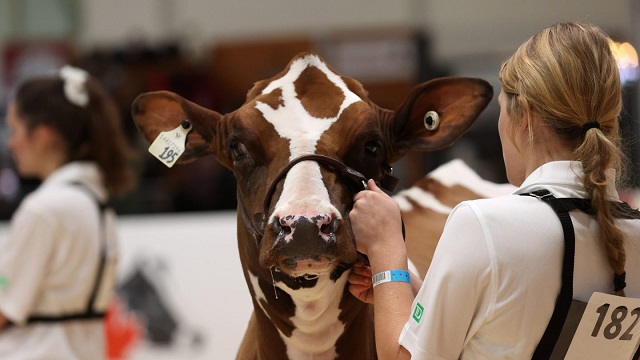
General view of the ‘TD Canadian 4-H Dairy Classic Showmanship’ within the 101st edition of Royal Agricultural Winter Fair at Exhibition Place in Toronto, Ontario, on November 6, 2023. The Royal is the largest combined indoor agriculture fair and international equestrian competition in the world. Getty Images photo
From the Canadian Energy Centre
‘Agriculture requires fuel, and it requires lubricants. It requires heat and electricity. Modern agriculture can’t be done without energy’
Agriculture and oil and gas are two of Canada’s biggest businesses – and they are closely linked, industry leaders say.
From nitrogen-based fertilizer to heating and equipment fuels, oil and gas are the backbone of Canada’s farms, providing food security for Canadians and exports to nearly 200 countries around the world.
“Canada is a country that is rich in natural resources, and we are among the best, I would even characterize as the best, in terms of the production of sustainable energy and food, not only for Canadians but for the rest of the world,” said Don Smith, chief operating officer of the United Farmers of Alberta Co-operative.
“The two are very closely linked together… Agriculture requires fuel, and it requires lubricants. It requires heat and electricity. Modern agriculture can’t be done without energy, and it is a significant portion of operating expenses on a farm.”
The need for stable food sources is critical to a global economy whose population is set to reach 9.7 billion people by 2050.
The main pillars of food security are availability and affordability, said Keith Currie, president of the Canadian Federation of Agriculture (CFA).
“In Canada, availability is not so much an issue. We are a very productive country when it comes to agriculture products and food products. But food affordability has become an issue for a number of people,” said Currie, who is also on the advisory council for the advocacy group Energy for a Secure Future.
The average price of food bought in stores increased by nearly 25 per cent over the last five years, according to Statistics Canada.
Restricting access to oil and gas, or policies like carbon taxes that increase the cost for farmers to use these fuels, risk increasing food costs even more for Canadians and making Canadian food exports less attractive to global customers, CFA says.
“Canada is an exporting nation when it comes to food. In order for us to be competitive we not only have to have the right trade deals in place, but we have to be competitive price wise too,” Currie said.

Under an incredible Saskatchewan sky, a farmer walks toward his air seeder to begin the process of planting this year’s crop. Getty Images photo
Canada is the fifth-largest exporter of agri-food and seafood in the world, exporting approximately $93 billion of products in 2022, according to Agriculture Canada.
Meanwhile, Canadians spent nearly $190 billion on food, beverage, tobacco and cannabis products in 2022, representing the third-largest household expenditure category after transportation and shelter.
Currie said there are opportunities for renewable energy to help supplement oil and gas in agriculture, particularly in biofuels.
“But we’re not at a point from a production standpoint or an overall infrastructure standpoint where it’s a go-to right away,” he said.
“We need the infrastructure and we need probably a lot of incentives before we can even think about moving away from the oil and gas sector as a supplier of energy right now.”
Worldwide demand for oil and gas in the agriculture sector continues to grow, according to CEC Research.
Driven by Africa and Latin America, global oil use in agriculture increased to 118 million tonnes of oil equivalent (Mtoe) in 2022, up from 110 million tonnes in 1990.
Demand for natural gas also increased — from 7.5 Mtoe in 1990 to 11 Mtoe in 2022.
Sylvain Charlebois, senior director, in the Agri-Food Analytics Lab at Dalhousie University, said food security depends on three pillars – access, safety, and affordability.
“Countries are food secure on different levels. Canada’s situation I think is envious to be honest. I think we’re doing very well compared to other countries, especially when it comes to safety and access,” said Charlebois.
“If you have a food insecure population, civil unrest is more likely, tensions, and political instability in different regions become more of a possibility.”
As a country, access to affordable energy is key as well, he said.
“The food industry highly depends on energy sources and of course food is energy. More and more we’re seeing a convergence of the two worlds – food and energy… It forces the food sector to play a much larger role in the energy agenda of a country like Canada.”
-

 COVID-1923 hours ago
COVID-1923 hours agoPfizer reportedly withheld presence of cancer-linked DNA in COVID jabs from FDA, Health Canada
-
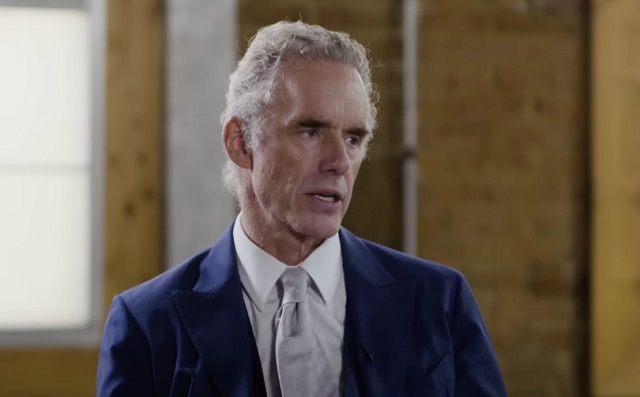
 Censorship Industrial Complex2 days ago
Censorship Industrial Complex2 days agoJordan Peterson, Canadian lawyer warn of ‘totalitarian’ impact of Trudeau’s ‘Online Harms’ bill
-

 Alberta2 days ago
Alberta2 days agoAlberta rejects unconstitutional cap on plastic production
-
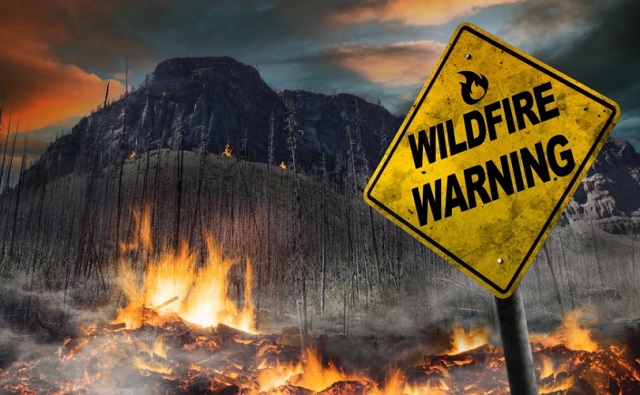
 Alberta2 days ago
Alberta2 days agoAlberta official reveals ‘almost all’ wildfires in province this year have been started by humans
-
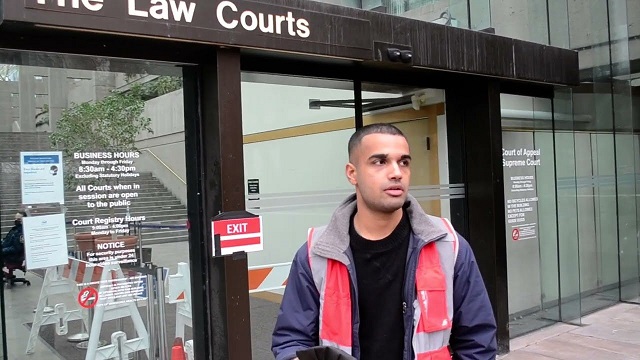
 Bruce Dowbiggin2 days ago
Bruce Dowbiggin2 days agoCome For The Graduate Studies, Stay For The Revolution
-
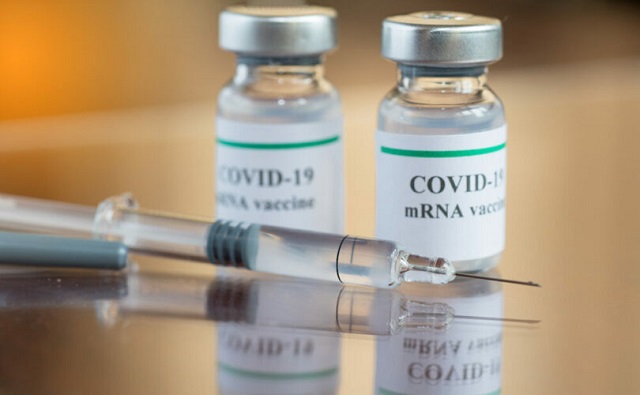
 COVID-1915 hours ago
COVID-1915 hours agoTrudeau gov’t has paid out over $500k to employees denied COVID vaccine mandate exemptions
-

 Business2 days ago
Business2 days agoTaxpayers criticize Trudeau and Ford for Honda deal
-
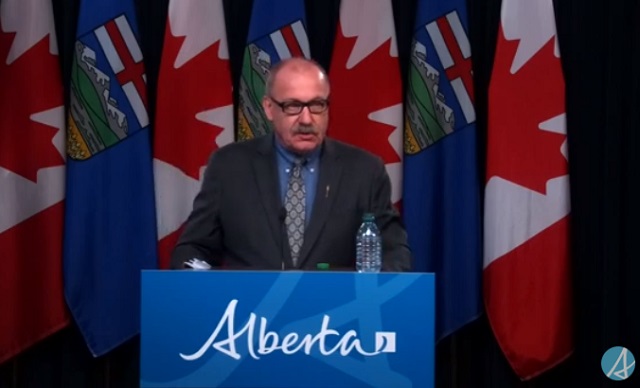
 Alberta2 days ago
Alberta2 days agoPolitical parties will be part of municipal elections in Edmonton and Calgary pilot projects





